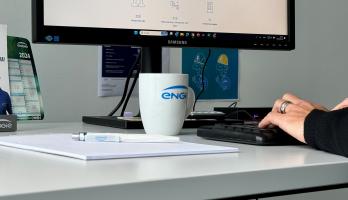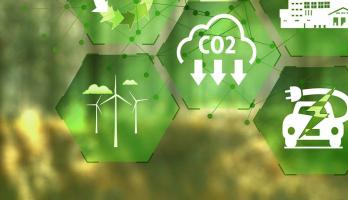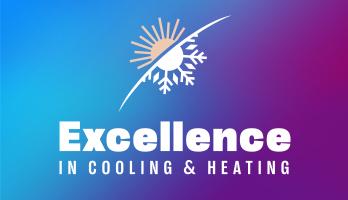
CO2 refrigerant: Answers to your questions
CO2 is a natural refrigerant that is especially suitable for efficiently operating hot and cold thermal storage units. And it is exceptionally safe to use. CO2 – with the technical name R-744 – is assigned to safety class A1 because it is neither toxic nor flammable. Jörn Stiegelmeier, head of technology and development at ENGIE Refrigeration, answers common questions about CO2 as a refrigerant.
Jörn Stiegelmeier, head of technology and development at ENGIE Refrigeration, answers common questions about CO2 as a refrigerant.
What are the main features of CO2 as a refrigerant?
CO2 is a natural refrigerant that is especially suitable for efficiently operating hot and cold thermal storage units. And it is exceptionally safe to use. CO2 – with the technical name R-744 – is assigned to safety class A1 because it is neither toxic nor flammable. CO2 is also very easily available and therefore cheap to procure; and with a GWP – or global warming potential – of 1 it has no harmful effects on the earth’s atmosphere. So CO2 has many useful and fundamental qualities.
Where is CO2 currently in use?
Sub-critical systems in the field of refrigeration already use CO2 as standard; such systems are commonly used to cool and store food, for example.
How will the use of CO2 evolve in future?
CO2 technology also has a second basic use in supercritical applications, i.e. at higher temperatures. However, this is a fairly new field for CO2 as a refrigerant. It can be used, for example, to develop heat pumps that are highly efficient in their respective temperature ranges of up to 110 °C when compared to other systems. Fundamentally there is a long-term trend towards natural refrigerants.
In which specific cases is CO2suitable?
It is possible to achieve very high heat transfer medium temperatures with CO2, so it is particularly suitable for the provision of heat in municipal and industrial heating networks, as well as in drying technology, such as in automotive paint shops. CO2 technology is also ideally suited for all applications that require heating and cooling at the same time – such as an air-conditioned hotel with a swimming pool and sauna, for example. This wide range of applications is one of its main benefits, along with its low GWP.
How does an operating company choose the best refrigerant?
The refrigerant CO2 cannot be used for every application. It is therefore advisable for operating companies to work with experts like ENGIE Refrigeration. The specialists at ENGIE have a great deal of experience and know-how. They can determine where the benefits of CO2 are an advantage, and where an alternative refrigerant would be more suitable.
What is the difference between sub-critical and supercritical operations?
Sub-critical operation means that operation takes place below the critical point. Supercritical means that the critical point is exceeded during operation. The critical point is a thermodynamic property and varies by type of refrigerant. The critical point for CO2 lies at a temperature of approx. 31 °C. The standard cold vapour process with evaporation and condensation takes place below this temperature (sub-critical operation). Above the critical temperature of 31 °C, condensation of the CO2 is no longer possible. Where the standard process has a condenser, the supercritical process has a gas cooler. Cooling medium flows through the gas cooler of a CO2 heat pump. As no condensation takes place here, large temperature spreads on the heat transfer medium side are preferable (for example for heating water: 40 to 90 °C).
About Jörn Stiegelmeier
Jörn Stiegelmeier has many years of experience in the field of refrigeration and heat technology. The electrical engineer has been active in the refrigeration industry for more than ten years, eight of which he spent in a managing position at BorgWarner Cooling Systems GmbH in Markdorf.
Since 2015 Jörn Stiegelmeier has been responsible for technology and development at ENGIE Refrigeration GmbH in Lindau Lake Constance. While he was working, the 46-year-old completed an MBA in General Management at Lake Constance Business School. In 2017 he became the head of refrigeration committee of the BTGA - the Federal Industrial Association for Building Services (Bundesverband Technische Gebäudeausrüstung e. V.).
Jörn Stiegelmeier is the author of several articles for national and international specialist publications and is regular speaker in industry events such as the efficiency forums conducted by ENGIE Refrigeration GmbH and Condair GmbH.










